Have you given much thought to what to do with your body once you leave it? Here’s why you may want to look at green burial options, including human composting and eco-friendly mushroom suits, if you cared about the planet while you were still in your body.
Thinking about dying is complicated. It’s part of our self-aware human existence to ponder the unknown and what happens, if anything, after we die. Naturally, thinking about death can bring up fear and stress, even for those least prone to anxiety. There are lots of great tools we can turn to to help us come to grips with our mortality, like meditation and even psychedelics.
One decision we can ponder that may also bring some peace over our deaths, especially if we care about the planet, is what to have done with our bodies once we’ve exited them. Yes, we’re talking about sustainable, green burials.

While our human bodies can seem so different from the natural world, all of us are carbon-based life forms that decompose. That’s good news for the planet, particularly given that human activity is the cause of our warming planet that’s wreaking havoc on our fellow earthlings and the planet itself. Perhaps a green burial is the least we can do to repay the planet for all its given us and all the damage we’ve caused.
The problems with traditional burials
Traditional burial methods often include formaldehyde-based embalming fluids that preserve the body. (But that’s only going to last so long, anyway.) Approximately 50 percent of dead bodies in the U.S. undergo the embalming process—and while this can often bring closure to grieving family members, particularly for an untimely or tragic death—allowing them to see their loved ones one last time, it’s not doing the planet any good.
Embalming
The embalming process is incredibly harmful to the planet; embalming chemicals leach into the soil and disrupt the microbial makeup, which can make it less effective at breaking down the body and performing other critical functions like carbon sequestration.
Formaldehyde has been conclusively linked to cancer, which puts funeral parlor workers, and even the bereaved, at risk.
“Embalmers have been pumping tens of thousands of litres of chemicals into dead bodies every year, but this suggests they have not been aware of the well-documented danger of chemicals in embalming fluid,” Mark Blackham, founder of the organisation behind New Zealand’s first natural cemetery, said in an interview in 2008.
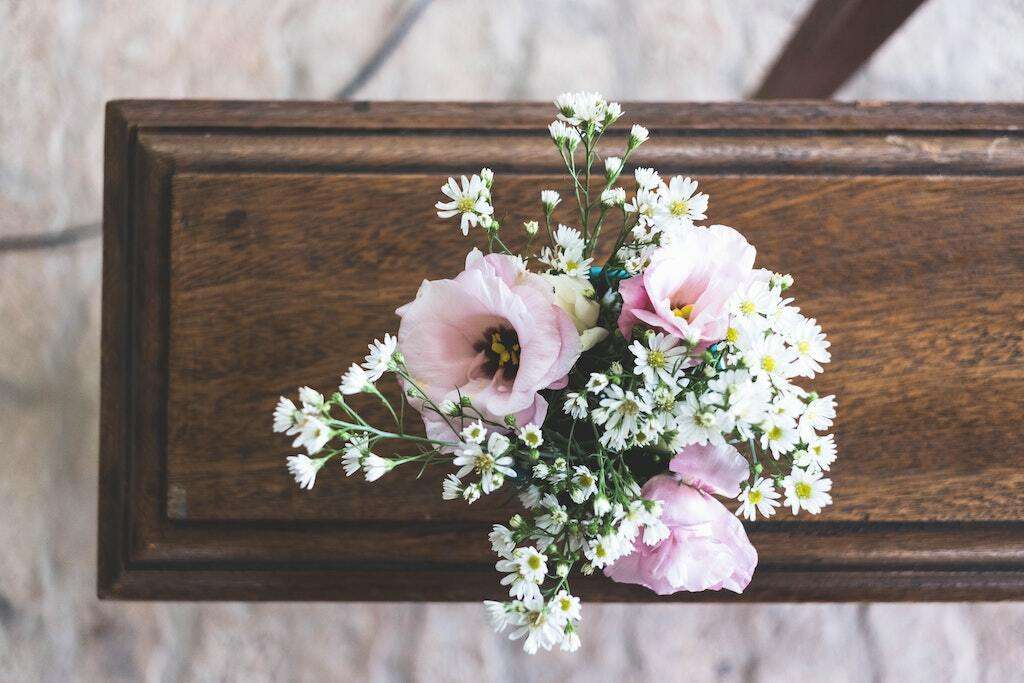
“Embalming fluid is a hazardous chemical. It works because it kills and ‘freezes’ living cells,” Blackham said.
According to Blackham, embalming chemicals remain in the soil for about ten years. “The dynamic nature of the soil environment means it is very hard to study the amount of death caused to microorganisms by embalming fluid during its decade-long active state.”
These chemicals can leach out of soil into waterways and put stress on biodiversity, and threaten human health.
Caskets
Traditional caskets are also inherently problematic as many are encased in chemicals including lacquers, paints, varnishes, and glues that pose problems for the soil, water, and plant life.
Buried bodies themselves pose another problem for the environment: they release methane, a heat-trapping gas more potent than CO2. Without the help of natural implements including soil and compost to absorb that, conventional burials can mean more damaging methane in the atmosphere.
Cremation
Cremation isn’t doing the planet too many favors, either. It also releases harmful gases into the environment including mercury and dioxin. Cremation is incredibly resource-intensive, too; each cremation uses up the equivalent of an entire month’s worth of electricity for a single person.
What is a green burial?
A green burial means opting for a chemical-free burial — neither embalmed nor cremated. For cemeteries that allow green burials, this can be as simple as being placed in a biodegradable coffin or shroud and interred without a concrete vault.
The goal of a green burial is to let nature take its course and decompose the body so it returns naturally to the soil without leaching chemicals.
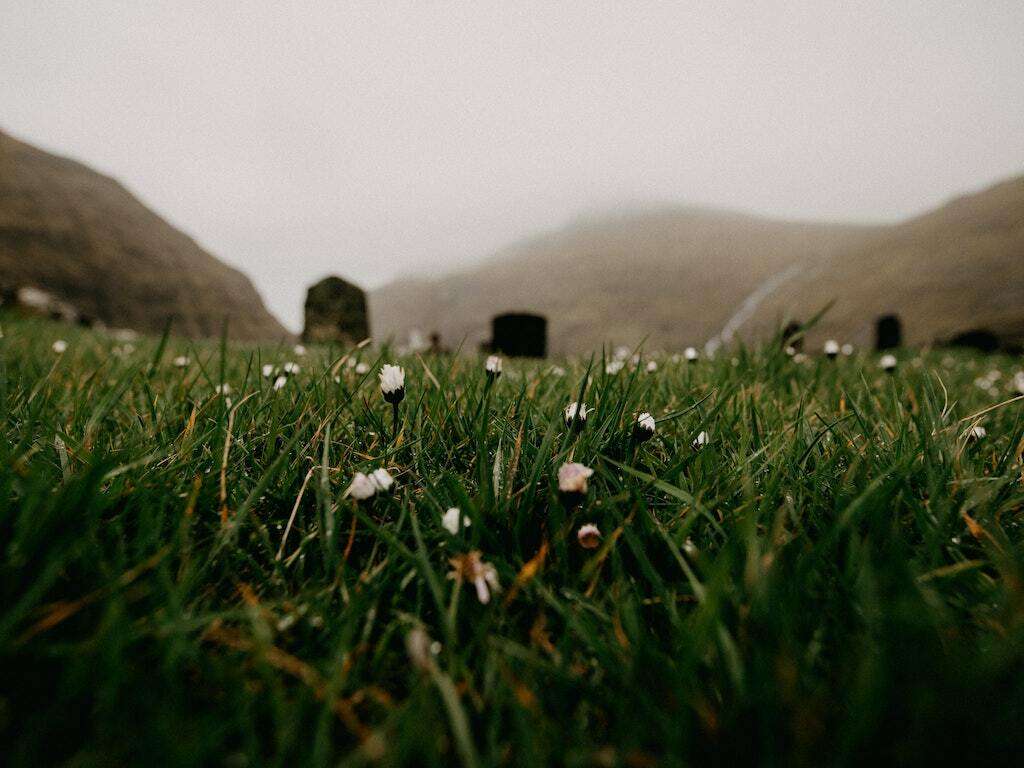
There are a number of conceptual ideas about green burials, including turning your body into a tree via an egg or oval-shaped biodegradable container that’s either buried at the foot of an existing tree or has new saplings planted atop it. But there are currently no prototypes for this option.
Other green options involve eco-friendly urns after cremation. There are wood urns, rock salt urns, paper urns, and urns that are designed to dissolve in water. One option that recently made headlines was having your ashes interred in an artificial coral reef. This involves mixing the ashes with concrete and then molding the mixture into a reef ball—a hollow structure designed to mimic a creviced reef. It sits about six feet wide on the seafloor, and ideally creates a marine habitat and helps prevent erosion.
Sustainable green burial options
So if traditional burials and cremations are out, what are the options for someone who wants a sustainable burial? Turns out, there are more sustainable options than you might think.
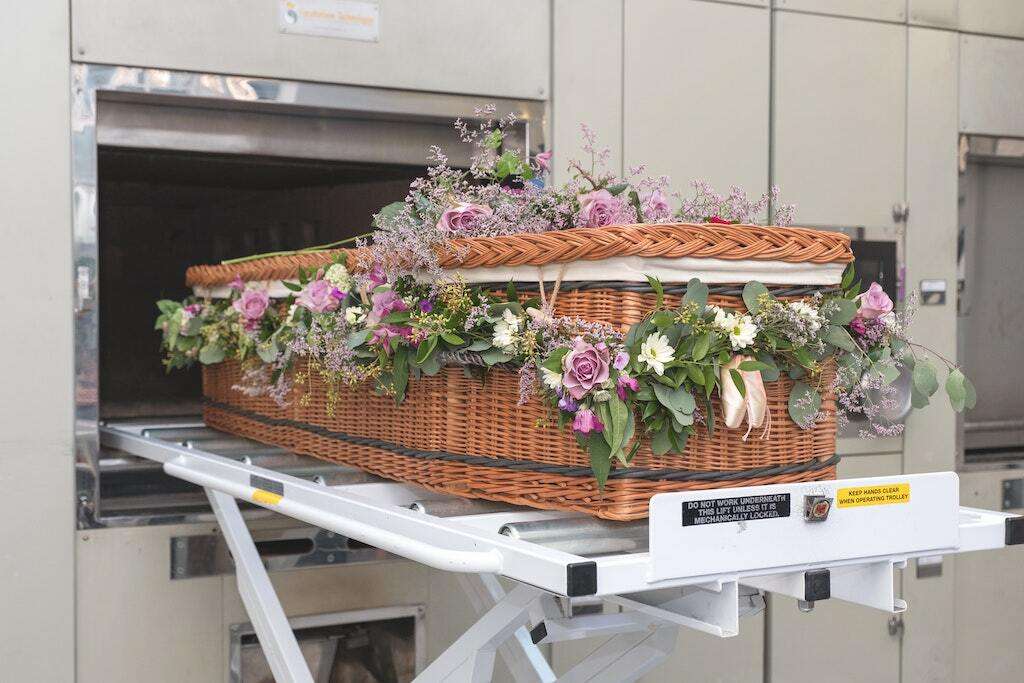
1. Simple caskets
Wood, woven, and even cardboard caskets are all viable options for green burials. They are simple and yet traditional burial methods for those who want to reduce their impact on the planet but still have a traditional burial plot. They just need to be free from chemicals such as varnish, paint, and glue. Some cemeteries will not take cardboard and it may not be suitable for all body weights.

2. Shrouds
Shrouds are fabric caskets made from natural materials including unbleached cotton, muslin, linen, and bamboo, among other materials. They often come with pockets your loved ones can fill with mementos, herbal sachets, and flowers. Today, a range of options are available that you can have decorated or designed.
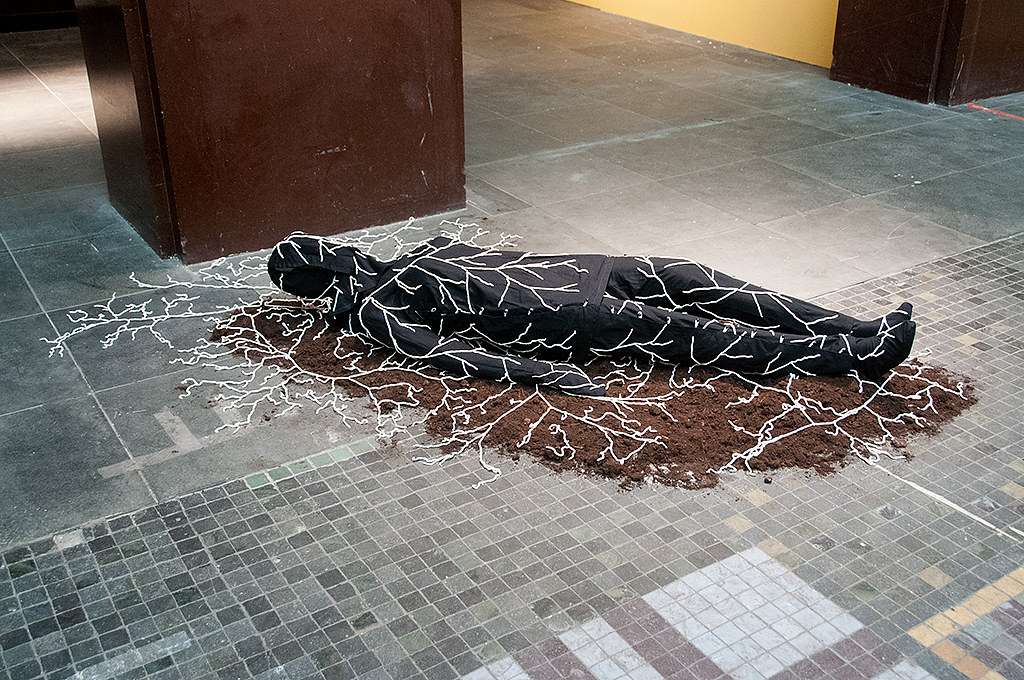
3. Eco-friendly mushroom burial suit
Another biodegradable burial option is a mushroom suit — an organic cotton fiber “suit” that has mushroom spores sewn into it. It’s essentially a shroud with added mushrooms. The deceased are put into the suit, and then directly into the ground—no coffin. The mushroom spores help the body to decompose via a natural process that doesn’t harm plant life, soil, or water.
Mushroom suits gained notoriety after actor Luke Perry was buried in one in 2019. Mushroom suits are also available for pets.
Any cemetery that allows for green burial options should accommodate a mushroom suit burial. You can choose from being put in the ground directly in the suit (that’s what Perry did), or you can be placed inside a sustainable or biodegradable casket in the suit.
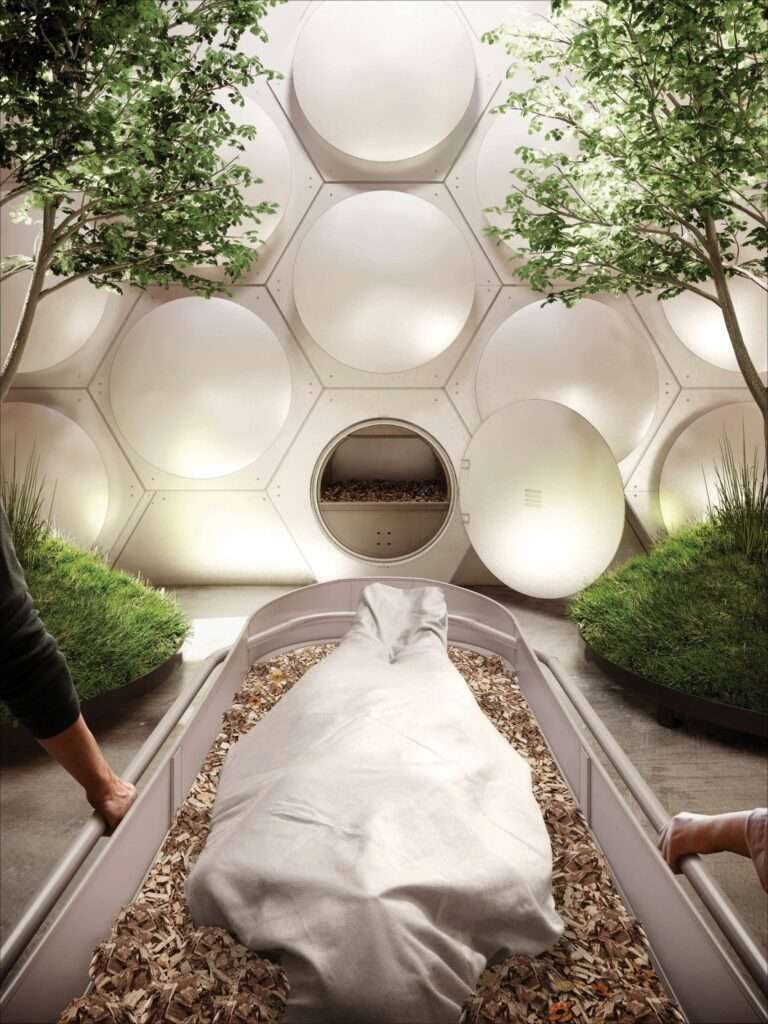
4. Human composting
California recently became the fifth state to legalize human composting (although it won’t go into effect until 2027). The process is also called “natural organic reduction.” It’s currently also legal in Colorado, Vermont, Oregon, and Washington.
This process doesn’t mean your loved ones toss you in the green bin with their coffee grinds and yard scraps and let the city deal with your remains. But the process isn’t that much different in function. Human composting means your body is put inside a vessel — typically metal or wood — that’s filled with natural materials including straw, alfalfa, or wood chips, just as you’d find in a compost bin. This process turns your body into soil, rich in nutrients and low on environmental impact.
One of the biggest issues facing the burial industry beyond the pollutants is space—cemeteries are running low on burial plots and in many parts of the world, there isn’t enough land to create new cemeteries. Human composting could help remedy that, turning loved ones into parks or gardens—even within existing cemeteries.
Human composting companies including Recompose, Return Home, The Natural Funeral, and Earth Funeral, plan to open up in California. But you can also pay to have your body shipped to a state where composting is legal. They will then return the soil remains.
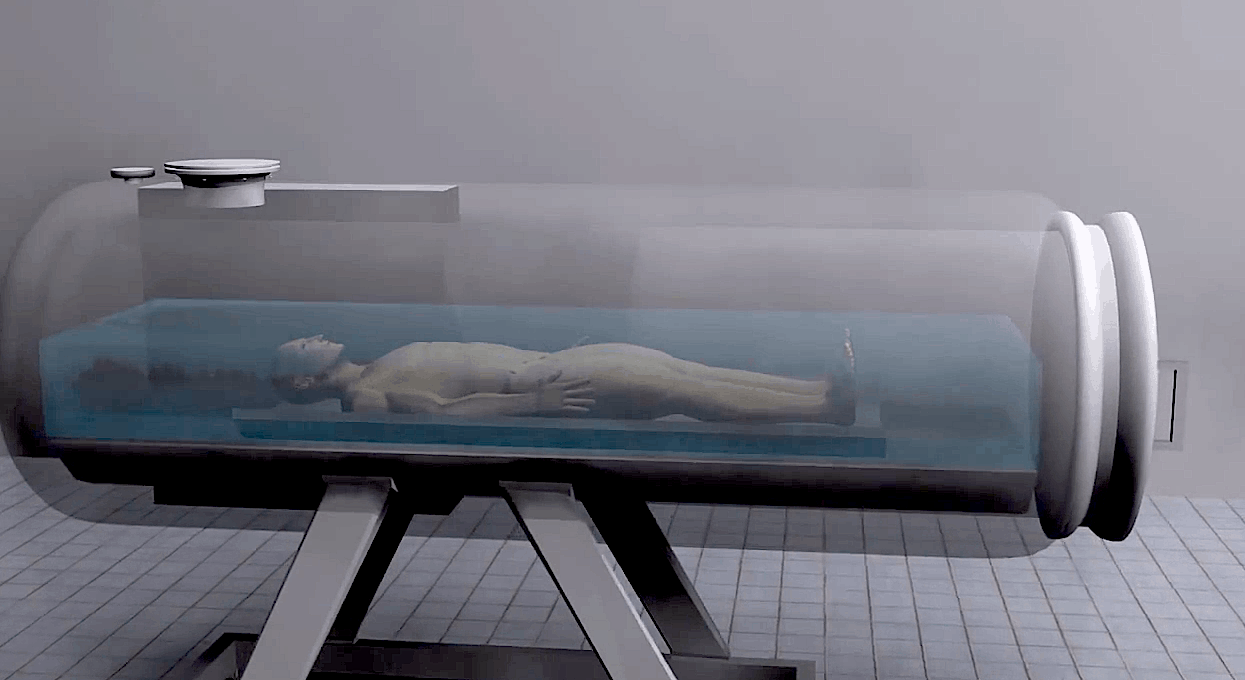
5. Aquamation
Alkaline hydrolysis, also called “water cremation” is a clean burial alternative to cremation that involves placing the body in an alkaline solution that dissolves the body, leaving only white bone ash and wastewater. Aquamation uses 90 percent less energy than traditional cremation, produces no direct emissions, and doesn’t require any fossil fuels.
This practice is currently legal in a handful of states including California, Colorado, Florida, Georgia, Idaho, Illinois, Kansas, and Maine.
Related on Ethos:


